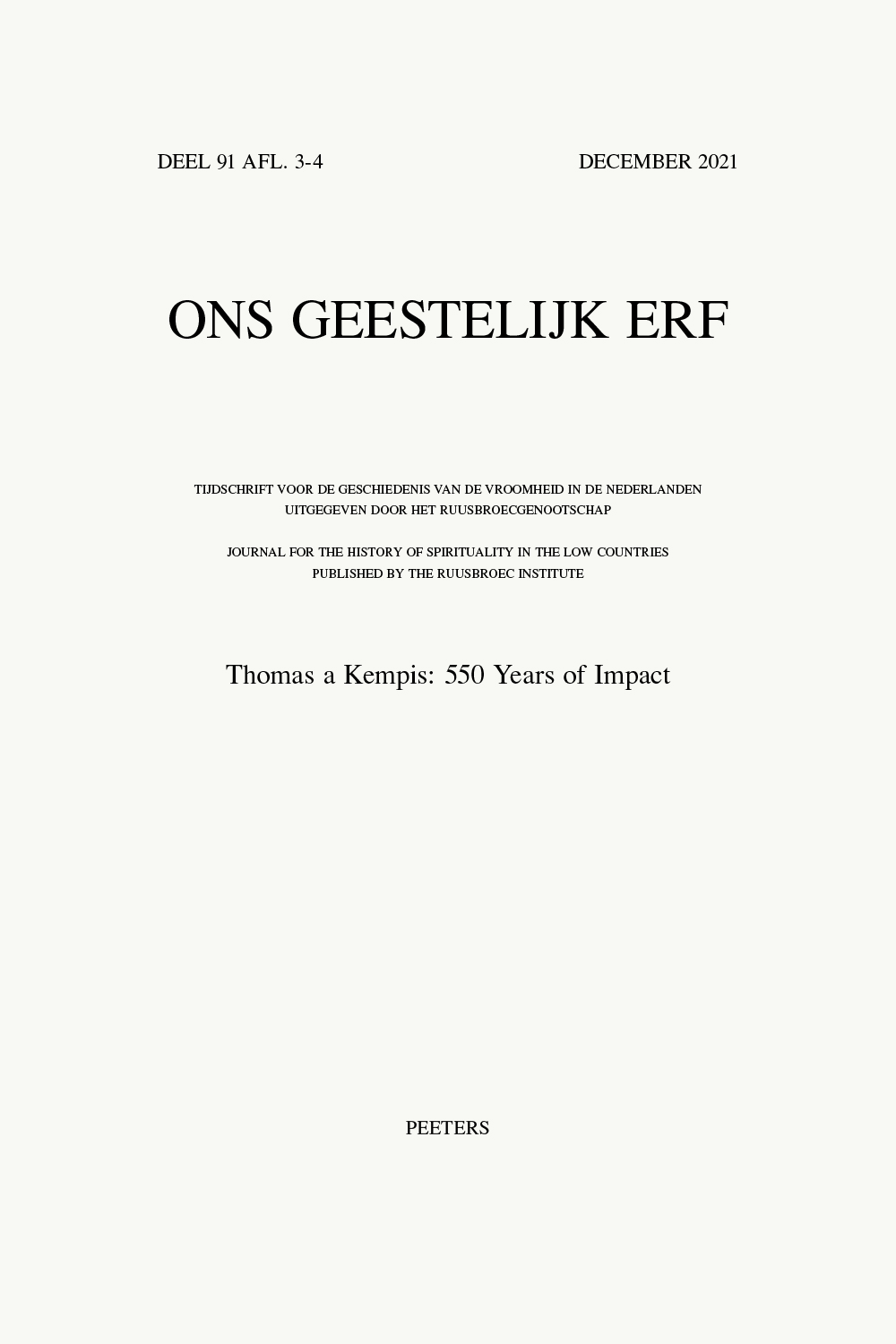 previous article in this issue previous article in this issue | next article in this issue  |

Preview first page |
Document Details : Title: De franciscanen, de leken en de drukpers Author(s): GOUDRIAAN, Koen Journal: Ons Geestelijk Erf Volume: 85 Issue: 4 Date: 2014 Pages: 230-266 DOI: 10.2143/OGE.85.4.3071292 Abstract : This article investigates the over 150 printed editions of Dutch vernacular texts with a Franciscan signature dating from the period ca. 1480-1540. The question is raised whether the use the Franciscans made of the printing press can justifiably be called systematic: do we have enough indications to suppose that they had a strategy with respect to the new medium? The answer – for which no other sources than the editions themselves are available – is positive: in the course of the period under investigation, and in particular during the years 1500-1520, the Franciscans became increasingly aware of the possibilities of the new technology. In this respect they were ahead of other categories within the Church. It is true that the printing press was engaged from an early moment for the multiplication of uniform (Latin) liturgical texts and for the production of indulgences. But the use of the press for the distribution of catechetical and devotional texts in the vernacular is of a different nature. The Church as a whole has been slow in meeting the demands for edificatory texts of the laity and of those without knowledge of Latin, leaving the initiative in this field largely to commercial printing houses. Within the horizon of the Netherlands, especially the low profile of the Modern Devout in the new method of book distribution is remarkable. Research of the last two decades has made it abundantly clear that the importance of the Franciscans – in particular of the Observants – in the production of vernacular literature has been strongly underestimated. The present article tries to define the role assigned to the printing press in this flowering of Franciscan literature. Several factors contributing to the emergence of a strategy could be identified. Older texts with a long history of manuscript circulation such as a Dutch version of Bonaventura’s Soliloquium found their way to the printing press from an early moment. They were flanked by contemporary texts such as Der sondaren troest (The Sinner’s Solace) by Jan van Reimerwaal, which was composed deliberately for the printing press in 1492, and the Kerstenspiegel (A Christian’s Mirror) by the prominent Observant Dirk Coelde. In various cases a direct relationship between the preaching activities of the Franciscans and the composition of their texts could be established, notably so in the case of the Boexken van der missen (Booklet on the Mass) by Gerrit van der Goude (1506ff.). In the 1510’s, texts by prominent members of the first generation of Observants circulating in manuscript so far were now offered to the printers. Awareness of the possibilities of the printing press increased enormously by the polemical use made of it (for Latin texts) in the long protracted conflict between the Observants and the Conventuals. The years 1517-1520 were crucial. By the Bulla Unionis, the Observants were recognized as the authentical representatives of the order. In 1518, a huge compilation of Franciscan materials in the vernacular was printed under the title De Wijngaert van Sinte Franciscus (St Francis’ Vineyard): a triumphant though not polemical celebration of the victory won by the Observants. The same years saw the first intervention in favor of a printed edition by Matthias Weynsen, who was to become the champion both of the newly defined Franciscan order in the Low Countries in general and of the Franciscan printing press in particular. When Luther entered the stage, the Franciscans more than any other category in the Church were ready to reply to him by means of the new technology. |
|


